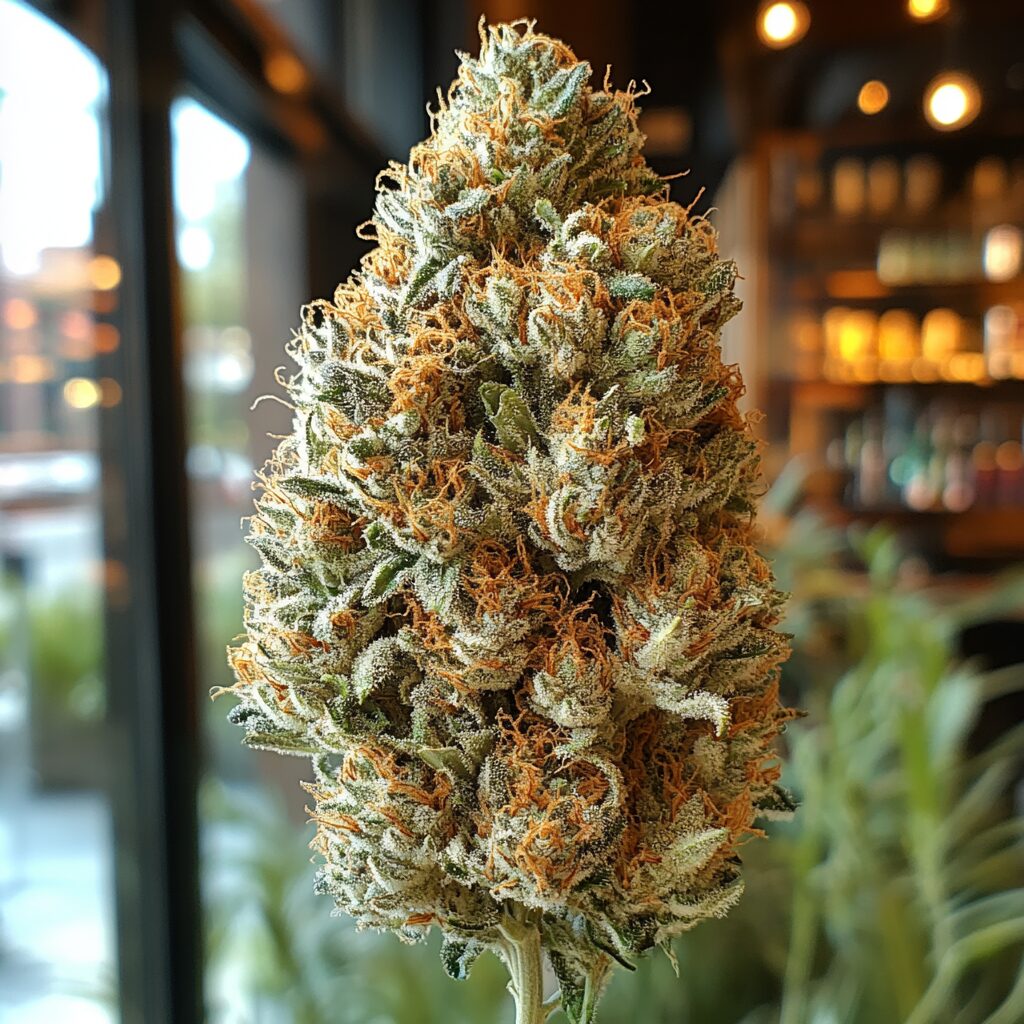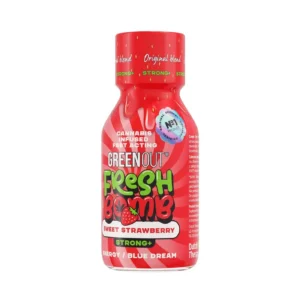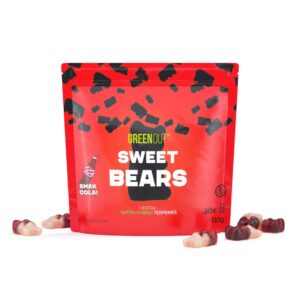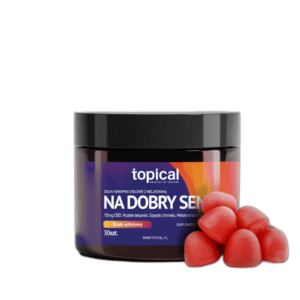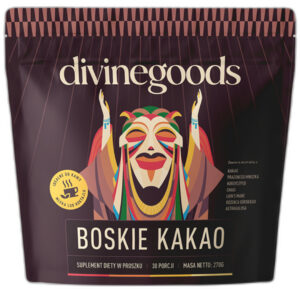CBG, or cannabigerol, is a non-psychoactive cannabinoid found in the cannabis plant. It is often referred to as the "mother of all cannabinoids" because it is the precursor to THC and CBD, meaning that other cannabinoids are formed from its acidic form, CBGA. Unlike THC, CBG does not have an intoxicating effect, making it attractive to those seeking health benefits without psychoactive effects.
Most strains of hemp have a CBG concentration of around 1%, but there are special strains bred to increase its content. CBG is gaining popularity for its potential benefits, such as anti-inflammatory, neuroprotective and antimicrobial effects, although research is still in its early stages.
How does it work and what applications does it have?
CBG interacts with the endocannabinoid system, affecting various receptors such as CB1 and CB2, although it is a weaker ligand compared to THC. Studies suggest it can reduce inflammation, protect neurons and even support the treatment of hypertension or glaucoma. Some preliminary studies indicate a potential anti-cancer effect, which is particularly interesting, but needs confirmation in further human studies.
Products with CBG, such as oils, capsules or tinctures, are commercially available, especially in countries where hemp seed is legal, and can be more expensive due to the low efficiency of extracting CBG from the plant.
Cannabigerol (CBG) is a non-psychoactive cannabinoid found in the cannabis plant that is gaining increasing interest for its potential health benefits. Unlike tetrahydrocannabinol (THC), CBG does not have an intoxicating effect, making it attractive to those seeking medical alternatives without psychoactive effects. In this article, we will take a closer look at what CBG is, how it is produced, its benefits, how to use it, and its legal status, especially in Poland.
Definition and properties of CBG
CBG, or cannabigerol, is one of more than 120 identified cannabinoids in the cannabis plant. It is the decarboxylated form of cannabigerolic acid (CBGA), which is the parent molecule from which other cannabinoids such as THC and CBD are biosynthesized. As the plant grows, most CBG is converted into other cannabinoids, leaving about 1% of CBG in the plant. Some strains, however, produce higher amounts of CBG and CBGA, with low amounts of THC and CBD.
CBG is highly lipophilic and hydrophobic, meaning that it dissolves well in fats. Its pharmacodynamics are complex: it is a relatively weak ligand for the cannabinoid receptors CB1 (Ki: 380-2,600 nM) and CB2 (Ki: 153-3,460 nM), acting as a weak partial agonist. At the same time, it is a much more potent α2-adrenergic receptor agonist (EC50: 0.2-72.8 nM), serotonin 5-HT1A receptor antagonist (KB: 51.9 nM) and TRPM8 channel antagonist (IC50: 160 nM).
CBG production
CBG biosynthesis begins with the loading of hexanoyl-CoA onto a protein assembling polyketide synthase and subsequent condensation with three molecules of malonyl-CoA. This polyketide is cyclized to olivetolic acid by olivetolic acid cyclase and then prenylated with a ten-carbon isoprenoid precursor, geranyl pyrophosphate, by the aromatic prenyltransferase enzyme, geranyl-pyrophosphate-geranyltransferase, to biosynthesize cannabigerolic acid, which can then be decarboxylated to yield CBG.
As the plant grows, enzymes convert CBGA into THCA, CBDA or CBCA, and the decarboxylation process, which occurs under heat or UV light, converts these acids into neutral forms: THC, CBD and CBC. In some strains, this process is inhibited, allowing them to retain higher concentrations of CBG, making them attractive to growers interested in producing CBG-rich products.
Health benefits of CBG
Research on CBG is still in its early stages, but preliminary results suggest that it may have a number of health benefits. Detailed results from the study are listed below:
| Condition | Potential benefits | Detailed results |
|---|---|---|
| Neuroprotection | Reduction of neuroinflammation, protection against neurodegenerative diseases like Alzheimer's, Parkinson's, MS, Huntington's. | Improved motor function in Huntington's mice, reduced oxidative stress marker in rat hypothalamus, alleviated Aβ toxicity in PC12 cells, reduced cytokines/NO in MS models. |
| Anti-inflammatory | Effective for IBD, liver damage, rheumatoid arthritis, allergic asthma, skin health. | Reduction of NO in mice with colitis via CB2, reduction of ROS in macrophages, PPARγ activation, COX-1/2 inhibition, superiority of vitamin C in reducing ROS in HDF (0.1% serum CBG improved skin metrics). The high dose (24.6 mg/kg/day) increased inflammation in NASH, the low dose (2.46 mg/kg/day) alleviated it. |
| Antimicrobial | Broad spectrum against Gram-positives (e.g., MRSA, S. mutans) and some Gram-negatives, biofilm inhibition. | Disruption of bacterial cell membranes, quorum sensing inhibition, effective against S. aureus, V. harveyi. |
| Hypertension/Vasoconstriction | Lowers blood pressure, potential use in the treatment of glaucoma by reducing intraocular pressure (IOP). | 10 mg/kg CBG lowered blood pressure in mice, chronic administration effective, blocked by α2AR antagonist, no toxic effects in eyes/brain in rodents. |
| Cancer treatment | Reduces proliferation, migration, survival in prostate cancer, glioblastoma, colorectal cancer, pancreatic cancer, breast cancer, multiple myeloma. | Induction of apoptosis in glioma stem cells, inhibition of EGFR-TK, reduction of mTOR/EGFR in PDAC, increase of MHC-I for immune recognition, combination with CBD/Curcumin/Piperine reduced YAP in colorectal cancer. |
| Metabolic syndrome | Potential to lose weight, improve insulin sensitivity, fight cardiovascular/liver disease, type 2 diabetes risk. | A dual PPARα/γ agonist, HUM-234 prevented weight gain, lowered ALT/AST, increased BAT activity, and reduced appetite via CB1 blockade. |
| Pain management | Reduces pain sensitivity, effective for chemotherapy-induced neuropathy, chronic pain. | A 2022 study showed pain reduction in mice mediated by α2AR, CB1, CB2, sodium conductance inhibition in the dorsal root ganglion. |
These benefits are based on preliminary studies, mainly in animal models or in vitro, and require further human clinical trials to confirm their efficacy and safety.
Forms of CBG products
CBG is available in various forms, similar to CBD products, including:
- CBG Oils
- CBG capsules
- Topical products
- E-liquids for vaporization
CBG products can be more expensive than CBD products due to the lower efficiency of extracting CBG from hemp plants, which is due to the fact that CBG is found in smaller amounts, usually less than 1% by weight of the plant. It is important to choose products from reputable manufacturers to ensure quality and purity, especially in the context of the lack of regulation in some regions.
Side effects and safety
Currently, little is known about the side effects of CBG, but due to its similarity to CBD, it can be assumed that it is generally well tolerated. Studies in rats suggest good tolerability, but insufficient data are available for humans. Potential side effects may include sedation, dry mouth, decreased heart rate and blood pressure, resulting from α2-adrenergic receptor activation.
It can also interact with medications, especially those that affect blood pressure, such as blood pressure medications. It is advisable to consult a doctor before starting CBG, especially if you are taking other medications or have an existing medical condition, such as heart disease or hypertension.
Legality of CBG in Poland
In Poland, as in other EU countries, CBG is legal as long as it is extracted from hemp with a THC content below 0.3%, according to current regulations (increased from 0.2% to 0.3% in May 2022). CBG-containing products must meet the same requirements as CBD products, meaning they cannot contain more than the allowable THC limit. However, there are no specific regulations for CBG, which can lead to confusion in marketing and sales, especially in the context of dietary supplements.
CBG is a promising cannabinoid with the potential to support health in various areas, such as neuroprotection, anti-inflammatory effects and pain management. Although research is still ongoing, preliminary results suggest that it may offer benefits similar to CBD and even unique to itself, such as potential use in treating cancer or hypertension. As always, it's a good idea to consult with a medical professional before taking any supplements, especially in the absence of complete safety and interaction data.
